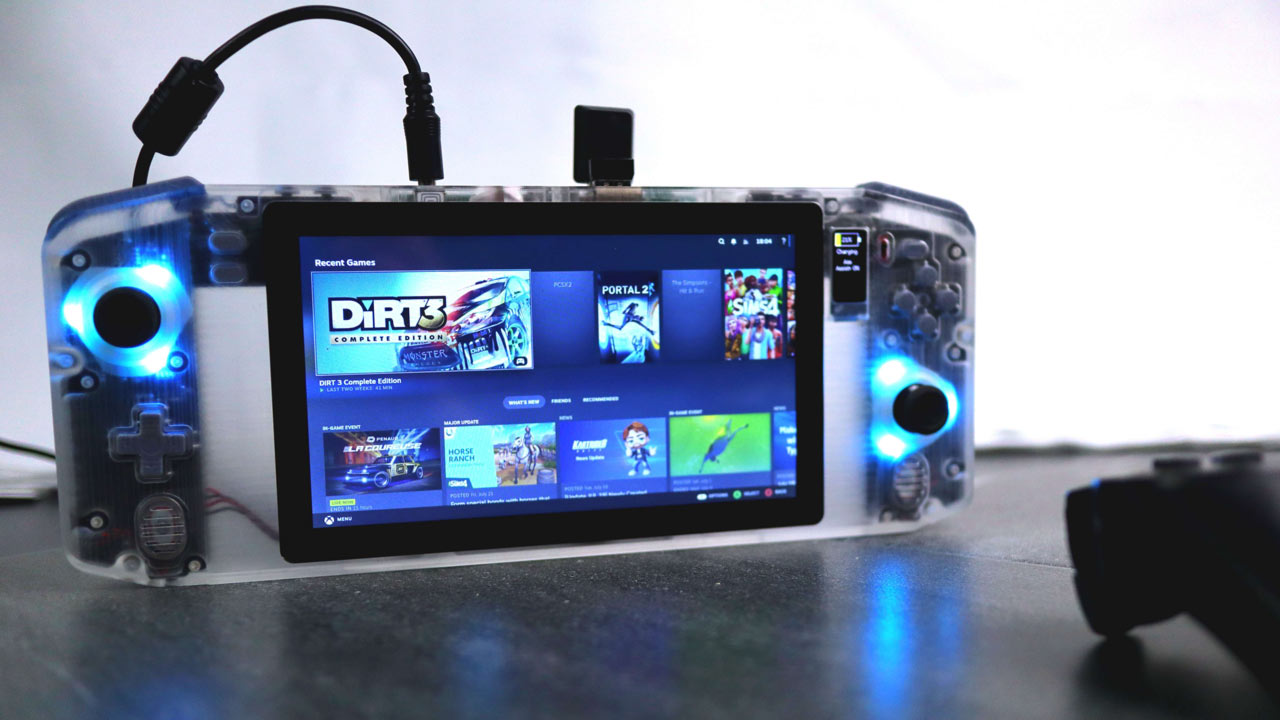DIY open source NUCDeck gaming handheld gets finishing touches after six months in development
Watch the 7-part video series and check out the full GitHub build and parts guide.

DIY building plans for an open source Intel NUC-based gaming handheld have been published on GitHub. YouTuber CNCDan is the brains behind the NUCDeck project, and he recently finished his seven-part video series documenting his work. In CNCDan’s final video, you can see the NUCDeck come together, with the tech DIY enthusiast ironing out the all-important controller section and its custom PCBs. Naturally, the final video ends with a quick PC gaming test session - does it make the grade as a DIY Steam Deck?
The YouTuber began the open source NUCDeck gaming handheld project with some very useful experience under his belt. In 2020 CNCDan completed his first handheld gaming PC project, based on an 8-inch Intel Atom tablet. More recently he collaborated with TechTuber Stonededge on the RetroLite CM4, a handheld powered by a Raspberry Pi Compute Module 4.
CNCDan admits that he has spent more money than he cares to admit on the creation of this handheld NUC gaming device. Moreover, the thinking, planning, crafting, construction, and development time put into this open source project spans hundreds of hours.
You may be wondering about the specs. One of the appealing things about this project, though, is that it has been designed to accept any standard NUC motherboard you might be able to get, with minimal tweaks to the plans provided.
The YouTuber managed to pick up a used 7th Gen Core i5 NUC model as a donor device without spending too much. From the video, it looks like the motherboard was swiped from one of the standard 4x4 NUCs, not one of the extreme or gaming devices.
CNCDan reckons that the Core i5 and 16 GB of RAM foundation fitted in his NUCDeck build has enough power to run some well-known AAA games produced up until around 2013, as well as more modern titles with modest hardware demands. Games said to be playable on the system include Portal 2, Tomb Raider (2013), CS:GO, and Crysis. Some Wii, GameCube, and PS2 emulation testing also worked out.
Another important aspect of the NUCDeck design is its display, which provides a decent handheld experience across its 7-inch diagonal. Helping reduce the demand on the processor, the display used in the project offers a humble 1024 x 600 resolution. The DWIN display is said to deliver 700 nits max brightness and offers capacitive touch. Adding some unique / stylized design, CNCDan has also integrated a tiny info screen into the NUCDeck handheld. This extra display uses a 0.96-inch 80x160 pixel IPS panel.
Stay On the Cutting Edge: Get the Tom's Hardware Newsletter
Get Tom's Hardware's best news and in-depth reviews, straight to your inbox.
A full list of components can be found at the project's GitHub page. This will provide information and links for batteries, joysticks, display drivers, triggers, RGB lighting, and even the screws and standoffs you need. The NUCDeck also features a Raspberry Pi Pico acting as a USB interface for the controls, and an MPU6050 3-axis gyroscope and a 3-axis accelerometer. Lastly, access to a 3D printer is required for the NUCDeck housing and buttons.
Intel officially stepped away from NUC devices this summer, and the NUC 13 Pro looks like the latest model that may be able to supply motherboards compatible with the NUCDeck as it stands. Asus is now known to be officially carrying forth the NUC torch, but its first project seems to be an Asus ROG gaming system, stepping up to replace the NUC Extreme line.

Mark Tyson is a news editor at Tom's Hardware. He enjoys covering the full breadth of PC tech; from business and semiconductor design to products approaching the edge of reason.